Sędziszów 2023-09-23
PKP Sędziszów.
Geographic coordinates: 50.565N 20.053E. Elevation 255 m. Address: Dworcowa Street 25. 28-340 Sędziszów.
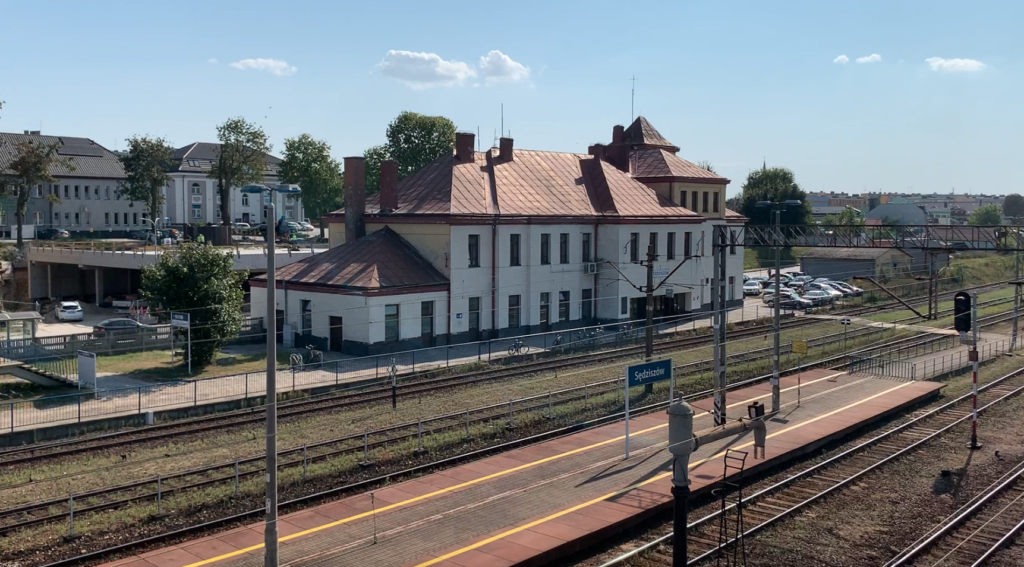
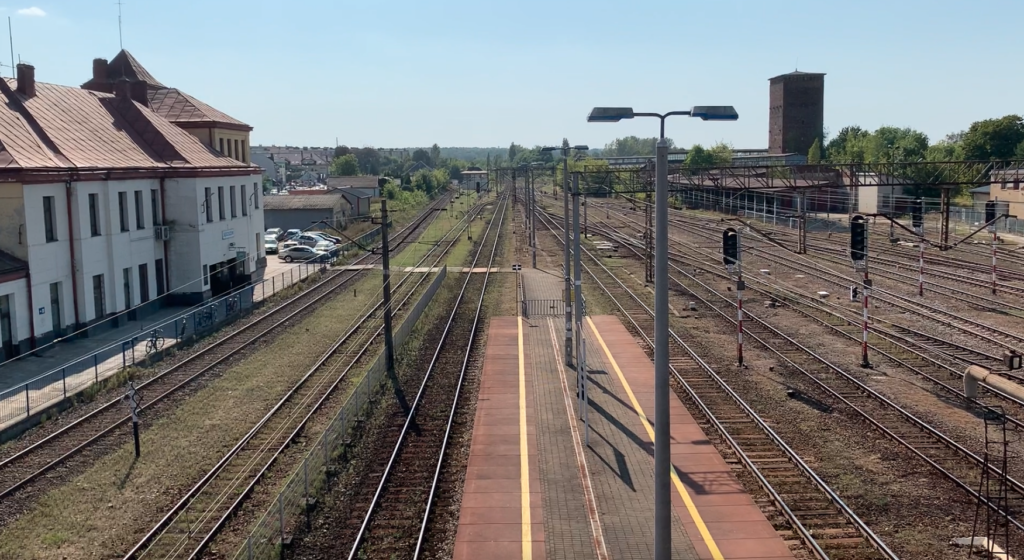
Photo description: View towards Kozłów. Next to the station building is the LHS.
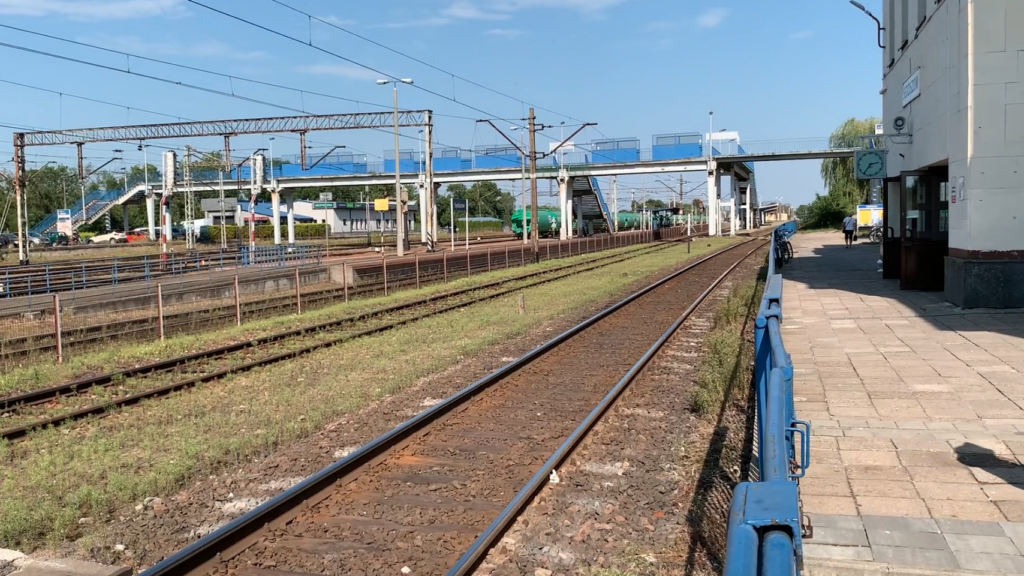
Photo description: In the foreground, the LHS track. View towards Jędrzejów.
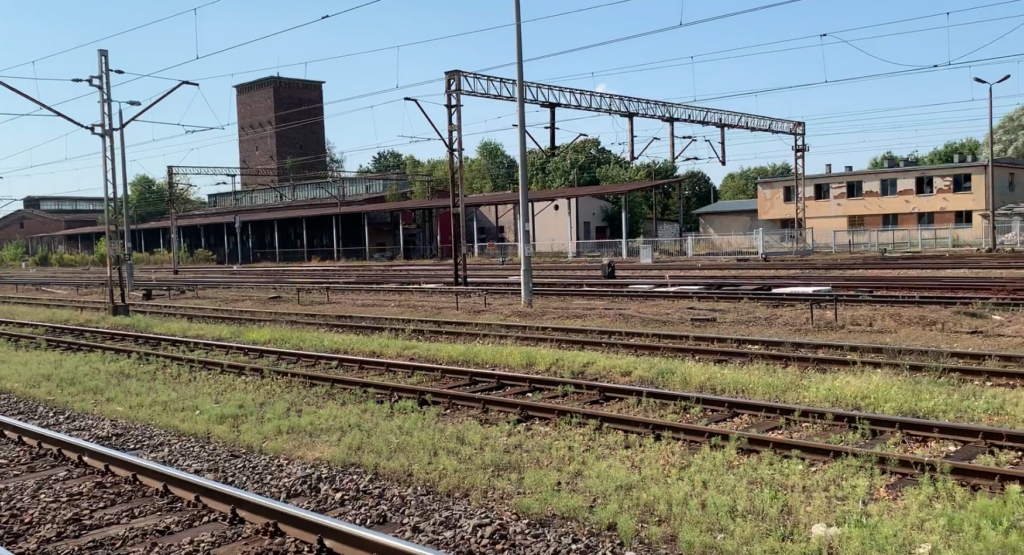
Photo description: From the left: a fan-shaped locomotive shed, a water tower, a rectangular locomotive shed, and an office building.
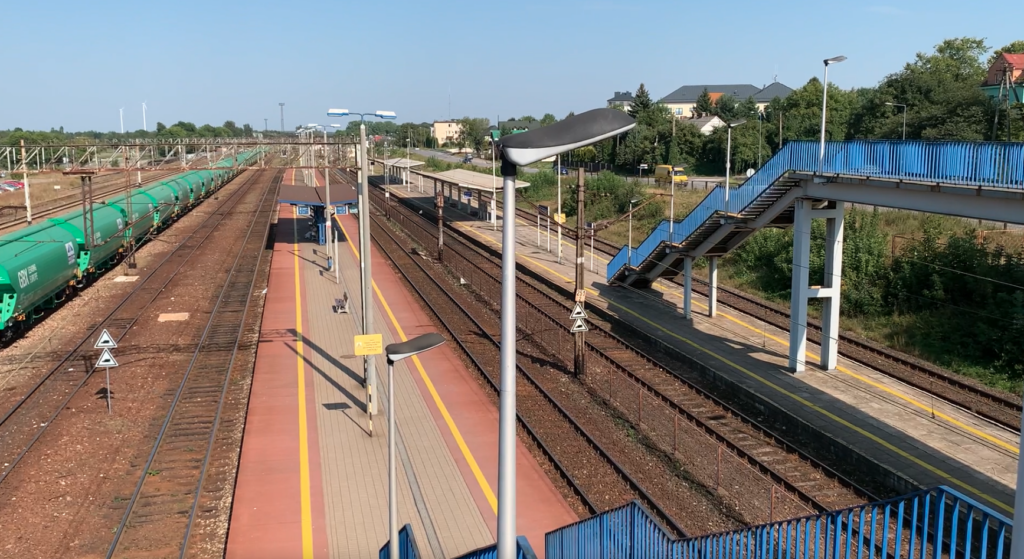
Photo description: View towards Jędrzejów.
Sędziszów city, Świętokrzyskie province.
There are several towns in Poland called Sędziszów. Sędziszów Małopolski is known. Sędziszów, which interests us, is located in the Świętokrzyskie Province near the junction of the Silesian and Lesser Poland Provinces. Sędziszów is a city and the seat of the commune, located in the Jędrzejów district on the Mierzawa river. Mierzawa is a right tributary of the Nida river. The river, flowing through the Miechowska Upland, the Wodzisław Garb, the Jędrzejów Plateau and the Nida Valley. The Mierzawa River is 64.18 km long and has a drainage basin area of 563.6 km2. From Sędziszów, the distance to: Jędrzejów 23 km. Kielce 61 km. Kraków 73 km. Dąbrowa Górnicza 82 km. Częstochowa 90 km. Warsaw 237 km.
Sędziszów is one of the oldest towns in the Świętokrzyskie Province. Sędziszów is the historic seat of the Jastrzębc family, or the knights of Konrad Mazowiecki. The beginnings of the settlement date back to the 13th century. Until World War II (1939), Sędziszów was the property of the nobility. The first owner of the settlement was Stanczko de Sędziszów, and the last was the Kamiński family. The heirs are still alive today. After World War II, the Sędziszów estate was seized by the state and a State Agricultural Farm (PGR) was established. After the liquidation of the State Agricultural Farm, the owner of the estate became the Agricultural Property Agency of the State Treasury.
Many residents of this area took part in the Kościuszko Uprising, the November Uprising and the January Uprising. In Sędziszów there is a baroque parish church of the Holy Apostles Peter and Paul, built in the period 1771-1786. In 1914, after a fire, the church was rebuilt. Other exceptional monuments include the Drewniane Housing Estate; buildings for railway workers were built during the occupation during World War II. In the city, the historical Figure of Jesus Christ from 1650, placed on a stone plinth, is located. Since 1974, the Sefako Boiler Factory, one of the largest manufacturers of power boilers in Poland, has had its headquarters in Sędziszów. In the period 1975-1998, the city administratively belonged to the Kielce Voivodeship.
Sędziszów has developed significantly since 1883, when construction of the railway line began. Currently, it is Railway Line No. 8 Warsaw West – Kraków Główny. A large locomotive shed was built in Sędziszów, and on its basis, the Rolling Stock Repair Plants were built. Apartment blocks were built for railway workers. In the period 1915-1917, a narrow-gauge horse-drawn railway was launched, on the distance Sędziszów – Szczekociny. The railway was liquidated in 1935.
During the German occupation (1939-1945), the station in Sędziszów was expanded, adapting it to the needs of military transport. A housing estate of single-family houses was built. The Germans established a ghetto for Polish citizens of the Jewish faith. The first underground organization was established in 1940. This was the beginning of the “Dwór” outpost of the ZWZ (Union of Armed Struggle), which covered the area of the Sędziszów commune. The Home Army operated in Sędziszów, and its soldiers performed intelligence and sabotage tasks. The Jędrzejowski district of the “Proso” ZWZ-AK operated. As a result of the regionalization of the Home Army in 1943, the “Niwa” Sędziszów district was created. The Germans tried to pacify the activities of the Home Army by organizing a raid. In addition to the Wehrmacht (Bundeswerk), these raids involved gendarmerie units, Bahnschutz units and groups of Volksdeutsche. During these raids, many people were arrested and murdered. On 17 August 1944, the pacification of the village of Swaryszów was carried out. As a result, 35 people were shot, including 29 soldiers from the Home Army. In 1944, during the “Burza” action, the “Niwa” district was the mobilization base of the 2nd Battalion of the Jędrzejowski Infantry Regiment, part of the Kielce AK Brigade. On 16 January 1945, Sędziszów was occupied by the Soviets; the 31st Guards Armoured Corps and the 5th Guards Army.
In the 50s, the railway junction began to be expanded and Sędziszów began to be called the “Railway City”. A railway clinic was built, with employees and their families in mind. More apartment blocks were built for railway families. A sawmill was built in Tarnia, which is currently the Tarnia Timber Industry Plant. The sawmill produced, among other things, railway sleepers. Three mills were built. Food cooperatives, a credit union, small trade and service establishments, shops, a chemist’s, and catering outlets operated. There was a primary school (seven-grade), a kindergarten, and a library. A three-year Basic Railway School was established.
In 1974, the Sefako Boiler Factory was funded. Construction of four-storey blocks for the factory’s employees began. Two housing estates were built; Na Skarpie and Sady. Another primary school, No. 2, was built. The vocational school was moved to the factory’s vicinity. A Complex of Vocational Schools and a Technical School was established.
In the period 1976-1979, the Sędziszów station was crossed by the LHS (Smelter and Sulphur Line, currently the Broad Gauge Metallurgical Line), LK No. 65 (Bridge over the Bug River – Sławków Południowy), with a track gauge of 1520 mm. There is a LHS railway transshipment station in the Sędziszów area.
In the 1980s, a parish under the invocation of Saint Brother Albert was established. In 1991, a general secondary school was opened. In 1995, the commune established the Self-Help House and the Caritas Station of the Kielce Diocese. In 2007, the football stadium of the Unia Sędziszów club was expanded. The 19th-century manor house was rebuilt after a fire. It houses the Care and Treatment Facility in Sędziszów of the Caritas of the Kielce Diocese. Remains of the surrounding park and the granary have been preserved. The manor house and the park have been entered into the register of immovable monuments Registration No. A.140/1-2 of July 3, 1978. In Sędziszów itself, there is a large reservoir, and in nearby Krzelów there are fish ponds used by anglers and for recreational purposes. Sędziszów received city rights on February 14, 1990. The city has an area of 7.92 km2. The city has a population of 6,141 (2023).
Sędziszów railway junction.
On January 13, 1885, the LK Gołonóg Wschodni (Dąbrowa Górnicza) – Sędziszów section was officially opened. At the same time, a locomotive shed and a water tower were built for watering steam locomotives. In the period 1914-1915, Sędziszów station was part of the Austro-Hungarian Military Northern Railway. After the end of the Great World War, auxiliary workshops in; Strzemieszyce, Sędziszów, Kielce, Dęblin, Lublin, Chełm, Zamość, Bełżec, Kowel, Włodzimierz, Zdolbunow, Sarny and Kiwerce were transferred to the management of the Radów Directorate of the Polish State Railways. In 1927, the locomotive shed in Sędziszów stopped servicing traction locomotives and began repairing rolling stock. At that time, 36 railwaymen worked in the locomotive shed.
In September 1939, the Sędziszów station was occupied by Germans and came under the management of the General Directorate of the Eastern Railway (Generaldirektion der Ostbahn). During World War II, the Germans, with the help of Poles, expanded the station’s facilities, adapting it to war needs. Around 1,000 people worked at the entire Sędziszów station; railwaymen and forced labourers, as well as Germans. Among the railwaymen employed in Sędziszów, many belonged to the Home Army. Their activities were limited to gathering information and minor sabotage. Minor sabotage consisted, for example, of derailing wagons or locomotives on a turntable or loose screws on the tracks. These incidents were carefully investigated by the Germans and obliging Germans. On the night of 10/11 March 1944, Germans from Jędrzejów raided the railwaymen’s apartments and arrested around 30 people. The Gestapo shot these people on March 17, 1944, in Piotrkowice and Chmielnik. At the station, the Germans organized decontamination companies for soldiers returning from the front, supply companies, a train unit to repair damage to the railway lines, and a makeshift medical train. On January 16, 1945, with little resistance from the Germans, the Soviets occupied Sędziszów: the 31st Guards Tank Corps and the 5th Guards Army. Sędziszów station was incorporated into the PKP Lublin Directorate.
In January 1945, the station facilities suffered as a result of the Soviet front. Many machines and devices were stolen and taken to Moscow. The PKP began recruiting a crew to work on the railway in Sędziszów. They started with cleaning work at the Sędziszów and Tunel stations. The locomotive shed was expanded, which had a total of 37 positions. Basic repairs of steam locomotives began in the locomotive shed. Later, the locomotive shed was granted the status of; Rolling Stock Repair Plants. On February 8, 1945, the first Ty42-16 steam locomotive was launched. On September 1, 1945, the Basic Railway School was launched. In 1947, the locomotive shed was granted the status of the Main Locomotive Shed 1st Class. The locomotive shed received heavy locomotives for servicing long-distance freight trains. These were usually Ty2 locomotives. In 1947, the repaired LK Strzemieszyce – Sędziszów was opened. In 1953, MD Sędziszów accepted steam locomotives of the Ty51 and Ty246 series. In 1953, medium repairs of locomotives Tr20, Ty2, Ty42, Ty43 were launched. In 1955, the departments were divided into the Traction and Wagons departments. In 1963, the first electric locomotives of the ET21 series were entered into MD Sędziszów. New inspection channels were prepared for these locomotives. Electric traction to the turntable was also suspended. In the following years, there were electric locomotives ET22 and ET41. In 1966, the electrified railway line was ceremonially opened: Sędziszów – Jaworzno Szczakowa – Bukowo – Olkusz – Wolbrom – Kozłów – Sędziszów. In 1972, heavy Soviet diesel locomotives ST44 were accepted at MD Sędziszów. Since 1972, medium repairs of diesel locomotives and revision repairs of steam locomotives of the following series began. In December 1979, a rescue train was assembled at Sędziszów station for the newly opened LK LHS (then the Metallurgical and Sulphur Line). In March 1982, revision repairs of network trains began. On February 28, 1983, the Company Professional Fire Department began its operations. In 1984, the Company Medical Clinic began its operations. In 1986, freight trains began to be operated in single-person service, without an assistant. In 1987, ZNTK began repairs of EZT EN57 and EN71 train bogies. On September 9, 1989, in MD Sędziszów, the operation and repair of steam locomotives was completed. In history, these were locomotives of the following series: Tp1, Tp2, Tp3, Tp4, Tr12, Tr20, Tr21, Tr201, Tr203, Tw1, Ty2, Ty3, Ty5, Ty23, Ty42, Ty43, Ty51, Ty246. Of the diesel locomotives, the following series were repaired: SM03, SM30, SM42, SM48, SP30, ST44.
Since 1989, the gradual decline of the Sędziszów Locomotive Depot was noted. The number and scope of rolling stock repairs decreased year by year. Coal wagons with wooden floors were still being repaired. In 1992, the Sędziszów Branch of ZNTK Gliwice (Gls), which had been repairing freight wagons in the locomotive depot, was liquidated. In the first half of the 1990s, due to the reorganization of the Polish State Railways, the Rolling Stock Plant (MT Sędziszów) was established in place of the Sędziszów Extra-Class Locomotive Depot. On July 1, 1997, as a result of another reorganization of the traction service, MT Sędziszów became a branch of the Kielce Rolling Stock Plant. The Rolling Stock Plant remained in Sędziszów for several years. Already in 2000, the plant did not conduct any railway activity. The liquidation of Polish Railways was in progress. The locomotive depot facilities were abandoned and systematically fell into degradation. Only the rectangular locomotive shed for basic rolling stock inspections survived. Part of the former ZNTK facilities were occupied by a waste segregation company. The office building is abandoned.
Jędrzejów station was electrified on April 29, 1967, as part of the electrification of the LK No. 8 Kielce – Sędziszów section. In September 1902, the first electric semaphore with a single arm was set up from the Dąbrowa side.
On September 11, 2024, Mr. August Pardała and Mr. Wiesław Urbański, retired railway workers, donated a chronicle of the history of the locomotive shed to Sędziszów. The chronicle was received by the mayor of Sędziszów, Mr. Wacław Szarek. The chronicle describes the history of the railway in Sędziszów in the period 1885-1999.
A monument of technology, the Ty51-15 tender 27D51 steam locomotive, stands next to the station. The description is in a separate chapter.
Sędziszów Station.
The station was built in 1885, as part of the “Iwangorodzko – Dombrowskaja Żeleznaja Doroga” investment, i.e. the Iwanogrodzko (Dęblin) – Dąbrowska Iron Road. Currently, the station is crossed by LK No. 8 Warszawa Zachodnia – Kraków Główny (251.272 km of the LK) and LK No. 65 Hrubieszów – Sławków Południowy LHS (317.615 km of the LK). The station infrastructure is extensive. The southern part is the LK No. 8 station, and the northern part is the freight station for LK No. 65. The station stretches for about 3,800 m, along the Mierzawa River on its southern side.
According to the PKP PLK classification, it has the category of a local station. The station serves passenger and freight traffic, including international traffic. In 2017, the station served up to 1,300 passengers per day, in 2019, up to 1,900 passengers per day. During the pandemic, there was a decrease in passenger transport, but in 2022, the station served up to 1,700 passengers per day. In September 2024, 51 trains departed from Sędziszów station per day, mainly PolRegio. You could go to the following stations: Kielce Główne, Kołobrzeg, Kraków Główny, Lublin Główny, Olsztyn Główny, Ostrowiec Świętokrzyski, Oświęcim, Sosnowiec Główny, Warszawa Wschodnia, Zakopane.
The station was built in the period 1884-1886 and fortunately survived both world wars, started by the Germans. There is a ticket office in the station, which has been open since December 2023; Monday – Friday from 9 a.m. to 3 p.m. 5:40 – 14:15. Saturday ticket office closed. Sunday and public holidays 13:15 – 17:20.
Currently, there are two island platforms and four platform edges at the station. At Platform 1, from the south side (station building), there is a 1520 mm wide track LK No. 65, LHS. Platform 1 is 215 m long and has two 45 m long roofs on the platform. Platform 2 is 295 m long and has a 25 m long roof. Access to the platforms is provided by a footbridge over the tracks. It is currently made of reinforced concrete and steel. There were no tunnels for passengers at the station.
The fan locomotive shed was built in the period 1882-1884. On January 13, 1885, the ceremonial opening of the locomotive shed took place. It was equipped with a turntable. The locomotive shed operated until 1995. Currently (2024) it is used as a municipal waste sorting plant. The turntable has been eliminated. There used to be a triangle at the station for the rotation of steam locomotives, but it has already been dismantled. The station houses the building of the Railway Rolling Stock Maintenance Plant, which occupies a rectangular locomotive shed.
Next to the locomotive shed is a no longer used water tower, which is square in base. It was built of red brick. There were water cranes at the station. Two cranes have survived. The water tower stands at 6 Sportowa Street. The current tower dates back to World War II and was built on the site of the previous one, which was certainly much smaller. There were four sets at the Sędziszów station; one superior and three executive; Sd, Sd1, Sd2, Sd3. The semaphores are light, installed during the electrification of the station.
The PKL PKP plan includes the renovation of the Sędziszów station by 2030, as part of the revitalization plan for 150 stations throughout the country. The station and the station level are to be renovated in Sędziszów. The renovation has been planned as part of the so-called second edition, in the period 2024-2030. In the plans of the United Right government, PLN 4.4 billion has been allocated for this purpose. The station in Sędziszów is one of six stations from the Świętokrzyskie province that have been included in the program list. The station in Sędziszów has been waiting for renovation for 10 years. Currently (September 2024), the December 13 coalition (folksdeutsche, communists and freemasons) governs Poland and the plans will probably be suspended.
Narrow Gauge Railway. Sędziszów – Szczekociny 209e.
Narrow Gauge Railway Sędziszów Narrow Gauge – Szczekociny 209e. The timetable for this route has been preserved. The track gauge is 600 mm. Horse traction. The line was associated with the figure of Mr. Goldszmid, the owner of the sawmill in Szczekociny. The line was probably built during the Great World War by Austrian troops and operated by them. This was in the period 1915-1917. The line was a freight and passenger line. Passenger transport was carried out in the period 1927-1929. After Poland regained independence, the line was nationalized and incorporated into the Railway Directorate in Radom. The line ended its operation in 1935 and was dismantled. Route LK 209e; Sędziszów Narrow Gauge – Tarnia – Tarniawa – Nowa Wieś – Słupia – Wywła – Goleniowy – Goldszmida Sawmill – Szczekociny Narrow Gauge.
Written by Karol Placha Hetman
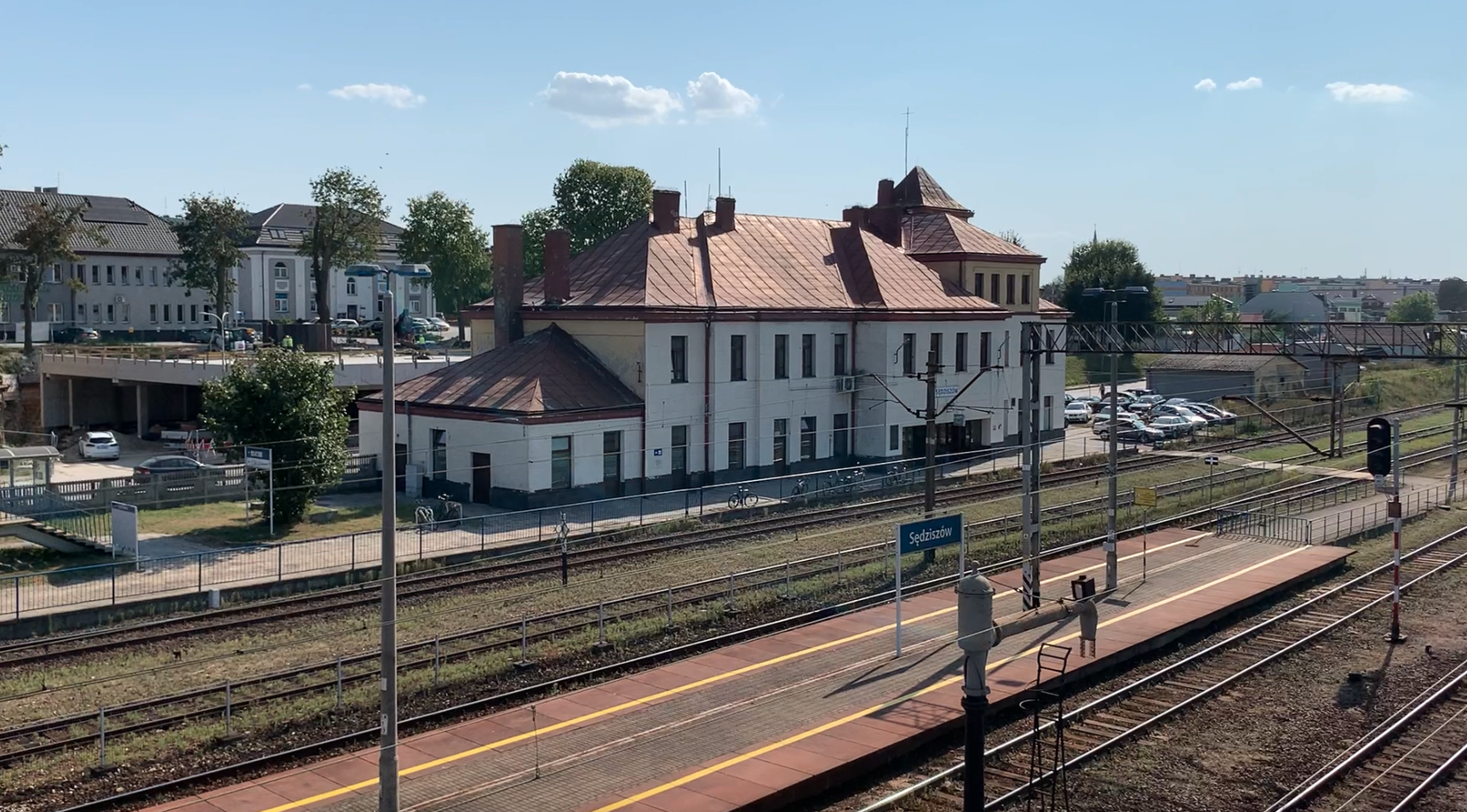
Leave a Reply
You must be logged in to post a comment.